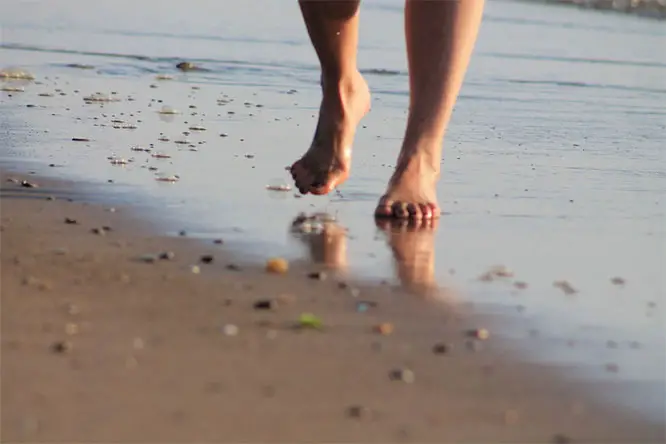610
Barefoot running is gaining traction among enthusiasts, many of whom believe it offers enhanced balance and foot alignment. Yet, before ditching your sneakers, it’s vital to understand the advantages and drawbacks fully.
In this article, we will delve into whether going shoeless is apt for everyone, from marathoners to casual joggers. Dive in to discover the ins and outs of freeing your feet!
Pros
- Encourages Natural Movement
Our feet are naturally equipped to run, which explains our toes. Traditional shoes might lead to unnatural running patterns, increasing injury chances. Without shoes, you embrace a natural rhythm, lowering injury risks and promoting overall wellness. - Foot Muscle Development
Without shoes, your feet are directly engaged, amplifying muscle use. This cultivates stronger feet, providing improved balance and understanding of body positioning – known as proprioception. - Enhances Running Technique
The absence of shoes’ cushion prompts a softer landing and better running posture. Moreover, the slim soles in barefoot shoes amplify ground feel, allowing necessary adjustments, like shifting from a heel strike to a midfoot stance, diminishing force. - Lowers Potential Injuries
Studies suggest that going shoeless can lower injuries, thanks to better technique and heightened proprioception. Conditions like plantar fasciitis might also be minimized with this method.
Cons
- Risk of External Injuries
Running shoeless isn’t without hazards, such as cuts from stray objects like rocks or shards. Especially for newcomers, awareness of the running path is paramount. - Acclimatization Period Needed
Switching to shoeless running isn’t instantaneous. It’s wise to begin with shorter distances, gradually enhancing as your feet adapt. This mindful approach prevents unnecessary strain. - Not For All
Not every runner will find solace in this method. Individuals with specific foot structures or past injuries should get a professional opinion before embarking. Likewise, those with conditions like diabetic neuropathy should abstain. - Lacks Padding
Going shoeless doesn’t give any foot padding. This could be an issue for those who seek additional absorption or those on rough surfaces requiring some footwear protection.
Choosing Your Barefoot Running Shoes
- Lightness and Flexibility
Your shoe should mimic the sensation of being barefoot, which means it needs to be light and malleable. The ideal shoe allows your toes space and offers a grip across terrains. - Sufficient Padding
Though they need to be light and bendable, some cushioning is crucial. The amount is subjective and depends on individual comfort. - Minimal Heel-To-Toe Drop
For barefoot shoes, you’ll want minimal height variance between the heel and toe. This encourages a natural foot movement, improving endurance and technique. - Robust Construction
Quality matters. Opt for shoes that last, made from resilient materials.
To sum up, shoeless running can boost foot strength and refine your form. Yet, it’s essential to approach it wisely to reap maximum rewards and stave off injuries.

